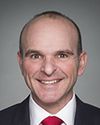I'll use the word “levy”, because we cannot impose taxes from the CRTC's standpoint, so it would be a levy or regulatory charge.
Currently, all telecom services contribute towards what I call the “social objectives” of the Telecommunications Act, which include expanding broadband into rural areas. Broadcasting entities such as distribution units and cable companies also contribute a percentage of their revenue to the CMF, for example, and other forms of programming.
As networks are converging, what the report suggests as one example of the things we can do is to merge those two social obligations, essentially, as the market is also converging, as people are getting video distribution products via both platforms together. We're not asking or wouldn't be suggesting that Canadians pay more; it's just a harmonization of their obligations.



